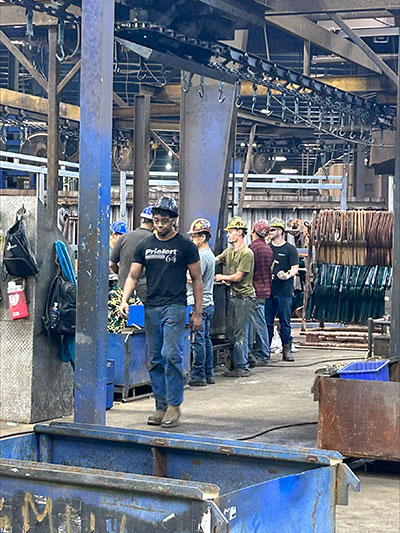Extreme heat has become a national health crisis and threat to manufacturing productivity putting worker safety and the bottom line at risk.
By Jill Wyant, Chief Executive Officer, Madison Air
Last month, near the end of a summer that was a global record breaker for the highest heat ever recorded, the federal government launched the Heat-Related EMS Activation Surveillance Dashboard to provide more complete data on heat-related illness across the nation. The tool was modeled after an opioid overdose tracker deployed by the administration last year and designed to save lives by identifying vulnerable communities and mitigating risk. The heat tracker has the same goal.
The EPA estimates that every year, extreme heat causes more than 1,300 deaths in the U.S. alone. Given that there are no laws requiring that heat-related illnesses be reported to public health agencies and the fact that symptoms are often misclassified or unrecognized, the actual number is likely far higher.
The fact that the government modeled this new tracker after a tool designed to prevent opioid overdoses is a clear signal that extreme heat has officially become a national health crisis. The EMS heat tracker is an important step in helping protect lives as we navigate this critical new reality. But it doesn’t tell the whole story.
For example, it doesn’t tell the part that takes place in factories and warehouses. Ours is an industrial economy and manufacturing is our country’s largest sector. Currently, only seven states have laws in place to protect workers from extreme temperatures. The administration recently directed OSHA to create national guidelines for heat in the workplace, but it will likely take years before they are enacted. In the meantime, there’s an economic cost as well as a human cost to extreme heat at work.
A 2020 study by The Atlantic Council calculated that the U.S. could lose $100B annually from heat-induced productivity declines. The study projects the cost of lost productivity will hit $500B per year by the middle of the century. To break it down, a study by the University of Chicago determined that when people are working in 90-degree heat, their productivity drops 25%. When temperatures reach 100 degrees, productivity drops 70%.
The economic costs and the human costs of extreme heat are inextricably linked.
As CEO of Madison Air, a leading group of indoor air quality companies, clean and comfortable air is literally my business. And as a collective of successful manufacturing companies, we at Madison know that what’s good for our employees is also good for our productivity, stability, and results. We call this equation Return on Air.
We know – scientifically and instinctively – what a safety culture can mean for manufacturers. The fact is humans can’t function well in the heat. Our cognition suffers, our speed and accuracy drop off and ultimately, we make more mistakes and are less safe. A hot room or building isn’t only uncomfortable and unsafe for employees, it’s a fast track to lower productivity – more sick time, more down time, more accidents and more turnover.

We’ve seen the correlation between comfortable air and improved results, not only from our customers, but from our own experience. For example – one of our companies, Nortek Air Solutions, has a plant in Tualatin, Oregon, that traditionally shut down production when temperatures went above 90 degrees. After they installed high velocity, low speed (HVLS) fans made by sister company Big Ass Fans last spring, production runs without a hitch, even at higher temperatures.
At Madison, productivity is important and the health and safety of our frontline workers even more so. What’s most important of all is understanding that you can’t have one without the other. We don’t need a tracker to tell us that.

Jill Wyant is the president and CEO of Madison Air, a $10B permanent capital, private enterprise dedicated to creating a safer, healthier, and more productive world through the power of better air.
In this episode, I sat down with Beejan Giga, Director | Partner and Caleb Emerson, Senior Results Manager at Carpedia International. We discussed the insights behind their recent Industry Today article, “Thinking Three Moves Ahead” and together we explored how manufacturers can plan more strategically, align with their suppliers, and build the operational discipline needed to support intentional, sustainable growth. It was a conversation packed with practical perspectives on navigating a fast-changing industry landscape.